
Purple Tarantula Image & Photo (Free Trial) Bigstock
The Purple Pinktoe Tarantula is an arboreal species which means that height is more important than width when it comes to selecting a tank. Since they're quite small, they do not need a huge tank. 12″x12″x12″ is the minimum they need, but if you give them a bigger enclosure make sure to prioritize vertical space over horizontal space.
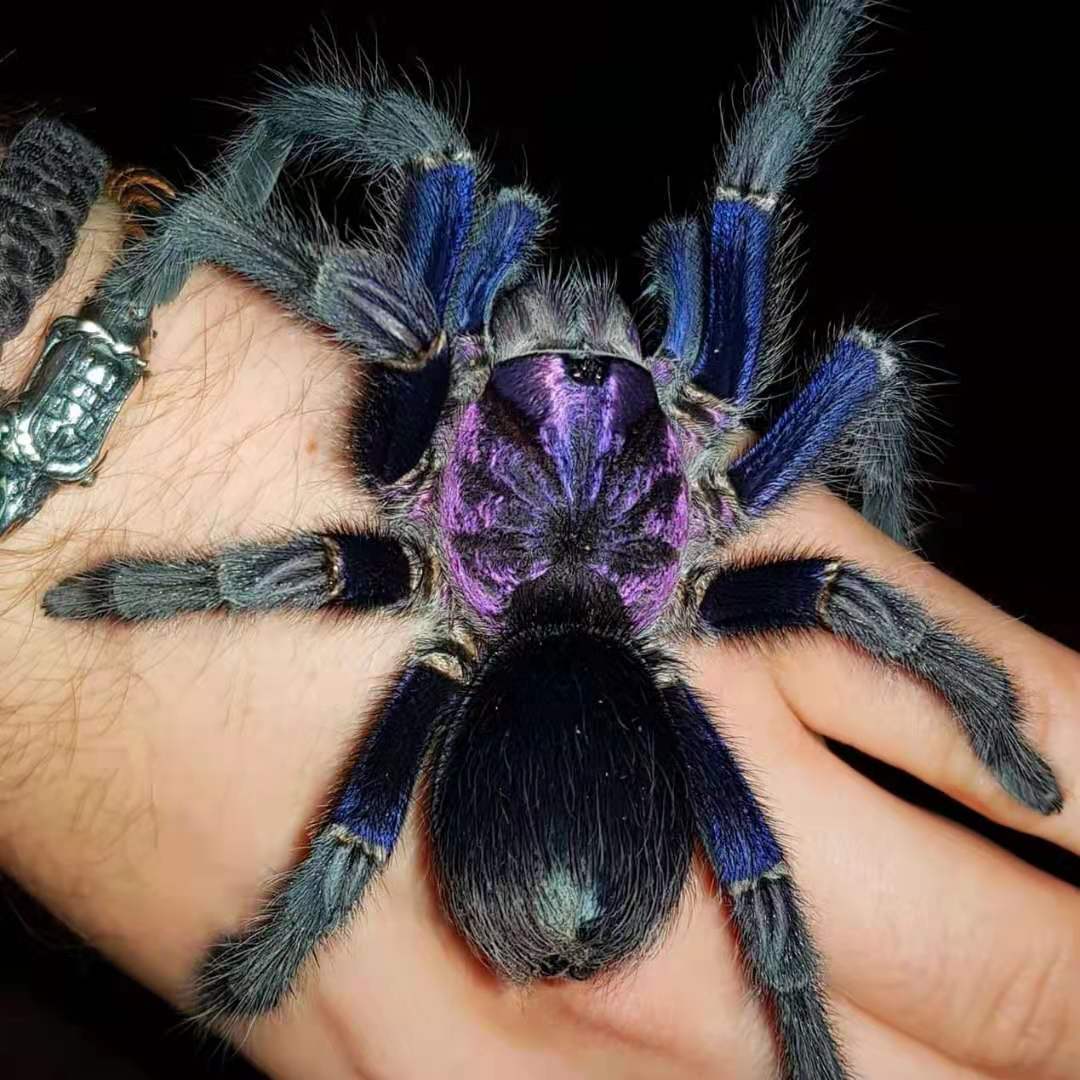
Phormictopus sp. dominican purple Tarantula HappyForestStore for sale
Tarantulas are found in 12 states, which include Arkansas, Arizona, California, Colorado, Kansas, Louisiana, Missouri, Nevada, New Mexico, Oklahoma, Texas, and Utah. In fact, there are more than 50 different tarantula species native to the United States and in this article we'll highlight 10 of them. 1. Desert Tarantula
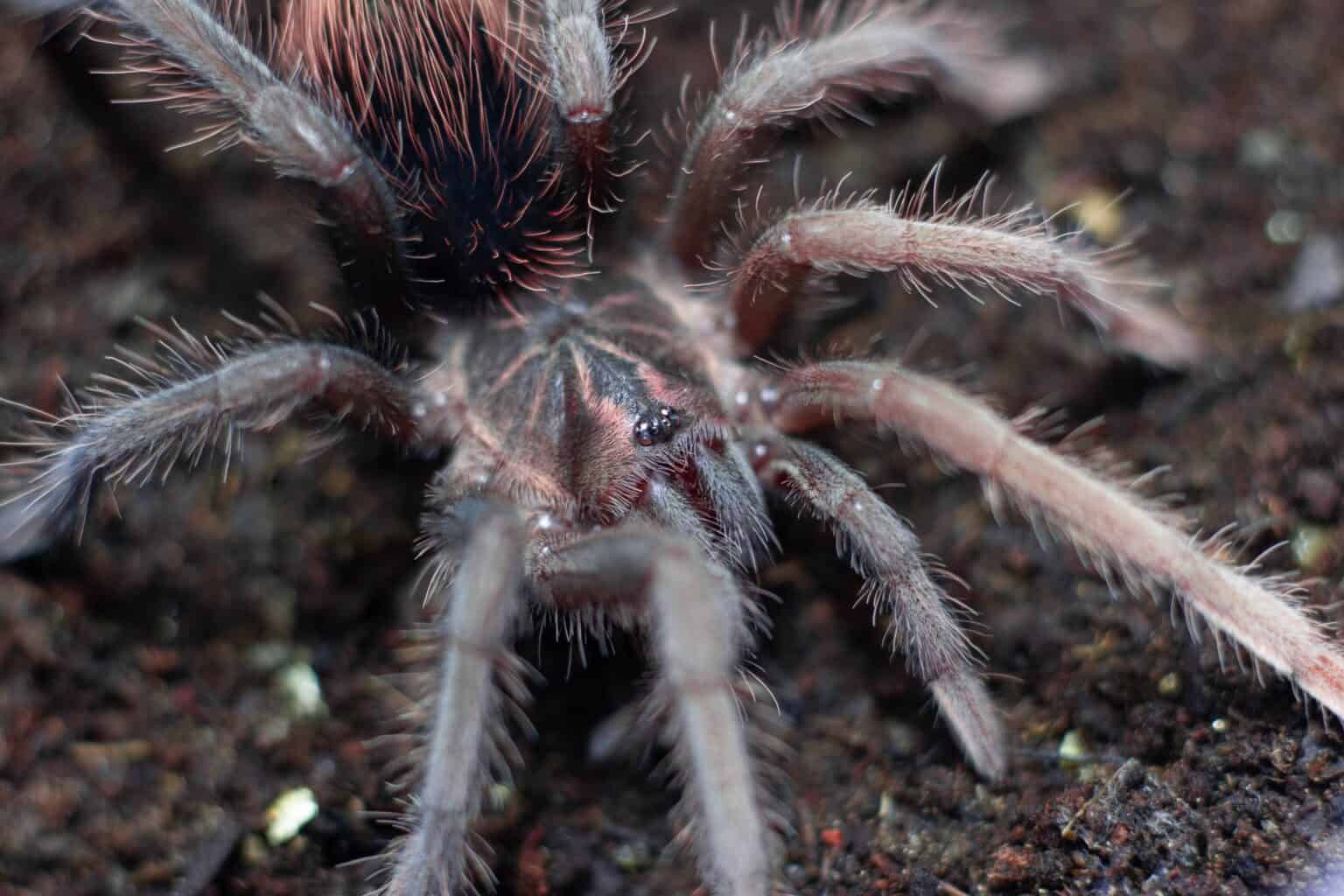
Purple Tarantula Animal Facts Avicularia purpurea AZ Animals
Genus: Avicularia Scientific name: Avicularia purpurea Physical Description and Identification Adults Size: They can reach a maximum length of about 5 cm (2.0 in). Color: The body is a deep brownish-purple to black, with hairs that are a lighter shade.

Giant Purple Tarantula Pamphobeteus sp. Spinne
What is a Purple Tarantula. The rear-horned purple tarantula, is a species of tarantula native to Chile. They are known for their striking purple coloration, which is a result of a unique mix of pigments in their exoskeleton. Physical Characteristics of Purple Tarantula. The purple tarantula is a medium-sized tarantula with a leg span of 4-6.

Phormictopus sp. dominican purple Tarantula HappyForest for sale
The purple tarantula is a captivating creature that has long fascinated scientists and arachnid enthusiasts alike. This article aims to provide a comprehensive overview of this remarkable species, delving into its unique characteristics, habitat, life cycle, diet, and its important role in the ecosystem. Understanding the Purple Tarantula
Purple rain r/tarantulas
The Purple Bloom Tarantula, scientifically known as Avicularia purpurea, is a species of tarantula that is found in the lush rainforests of South America. Its vibrant purple coloration sets it apart from other tarantula species, making it a popular choice among tarantula enthusiasts.

Shockingly Brazilian Pinkbloom TARANTULA Wows with its Purple Hue! Featured Creature
The purple tree spider, also known as the tapinauchenius violaceus, is a beautiful tarantula from South America. They live in the tropical rainforests of Brazil and French Guiana and are frequently found in tree cavities in the wild. Scientific Classification Species Overview Appearance And Size
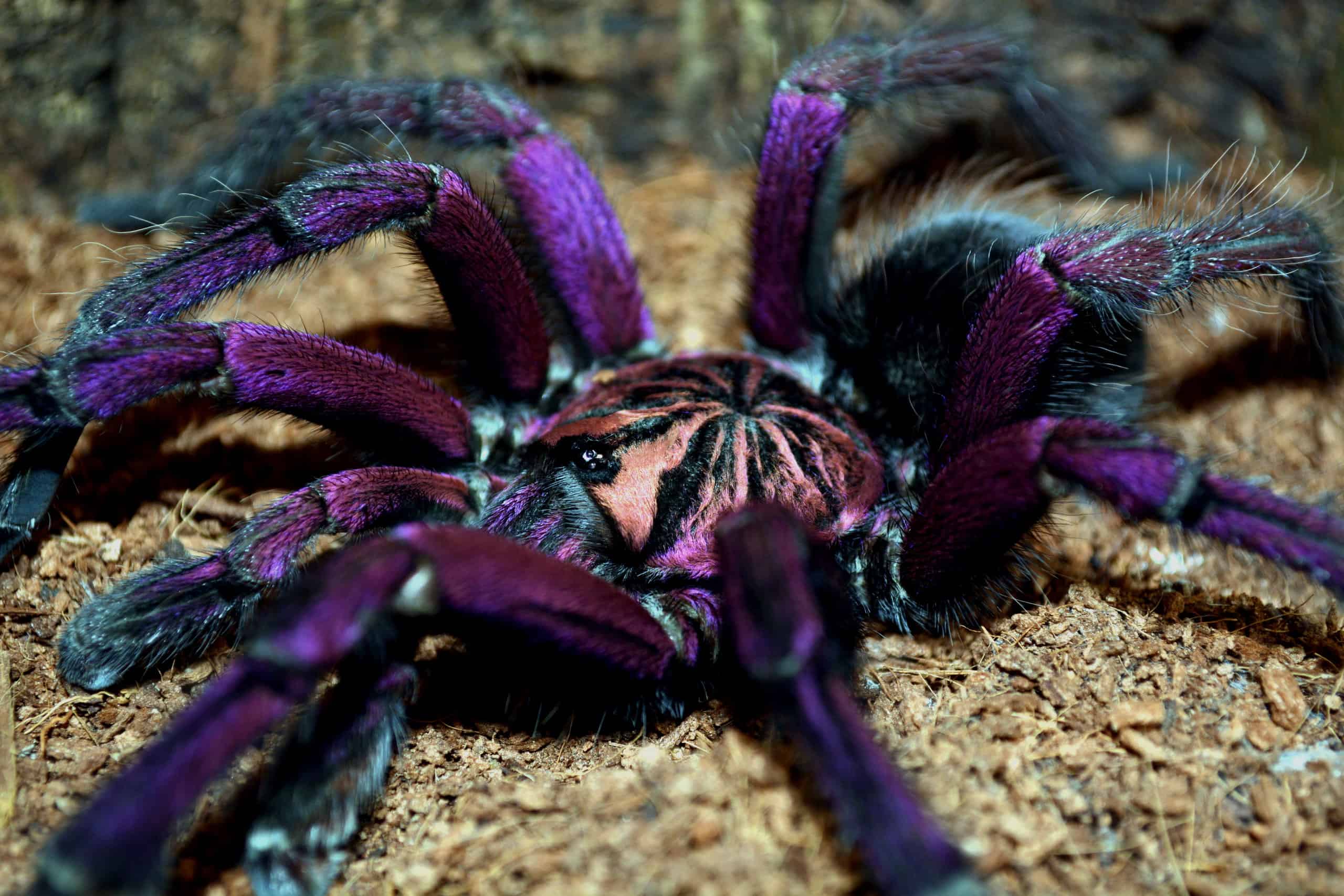
Purple Tarantula Animal Facts Avicularia purpurea AZ Animals
This is called aposematism. Their vivid colors deter predators. Colorful markings and patterns are used in courtship displays to attract potential mates. Bright colors can play a role in mate recognition and selection. Colorful tarantulas may use their coloration to regulate their body temperature.
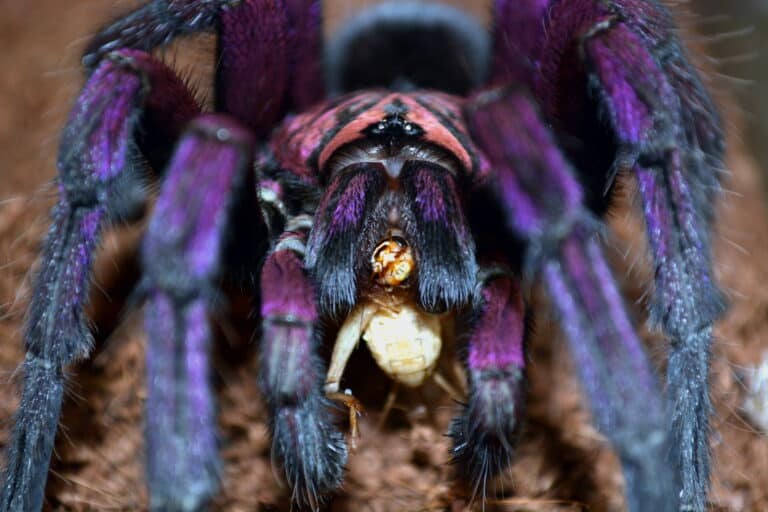
Purple Tarantula Pictures AZ Animals
In conclusion, the purple tarantula is a captivating species that showcases the beauty and diversity of the arachnid world. Its unique purple coloration, solitary nature, and intriguing behaviors make it an intriguing subject of study. However, it is crucial to protect their natural habitats and ensure their survival for future generations to.

Purple Tarantula (Avicularia purpurea) Facts, Identification, & Pictures
The Avicularia purpurea , also known as the Purple Pink Toe tarantula, is definitely one of the favorite tarantulas among beginners and veterans. This tarantula is part of the very well-received genus Avicularia and comes with the added bonus of some stunning colors.

Colombian Purple Bloom Tarantula Nick Garbutt
Avicularia purpurea, also called purple tree tarantula[citation needed], Ecuadorian purple tarantula [2] or Ecuador purple pinktoe, [3] is a species of spider belonging to the family Theraphosidae (tarantulas). [1] Distribution These spiders are mainly present in Ecuador in the Amazon Region. [2] Habitat
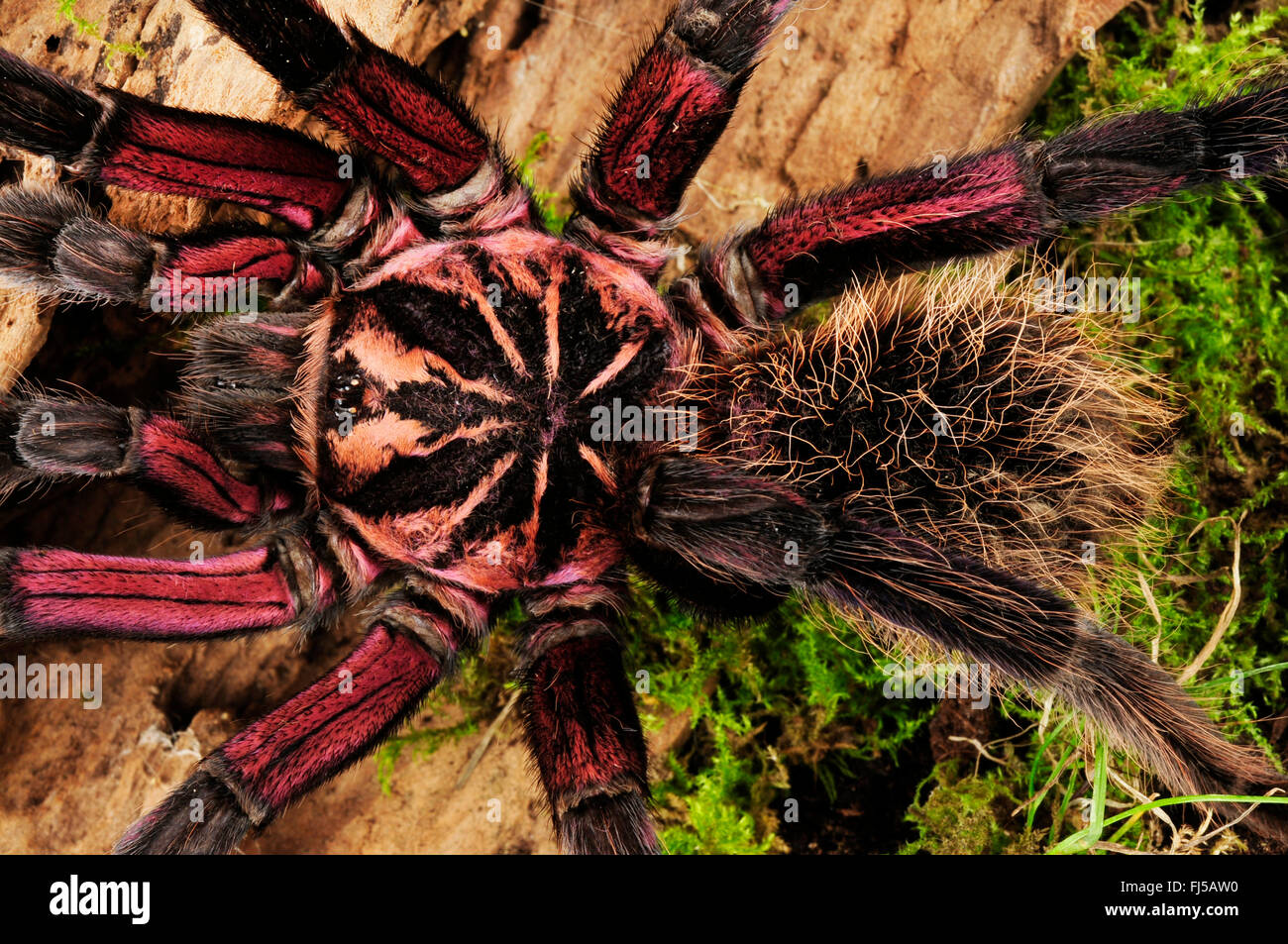
Purple Tarantulas
Adult Purple Tree Tarantulas can reach a leg span of up to 7 inches (18 cm), making them one of the larger tarantula species. Their bodies are covered in bristly hairs, and they have a fascinating intricate pattern on their abdomens.

Male PURPLE bloom birdeater. Takes 2yrs to develop colors. Females brownish. Native to Amazon
The Ecuadorian purple tarantula is a medium-sized species with an agile build, long legs, and short, stinging hairs. The tarantula gets its name from the vibrant purple hue that spans across its body. The abdomen is jet black. Sexing purple pinktoe tarantulas is easy, especially at full maturity.
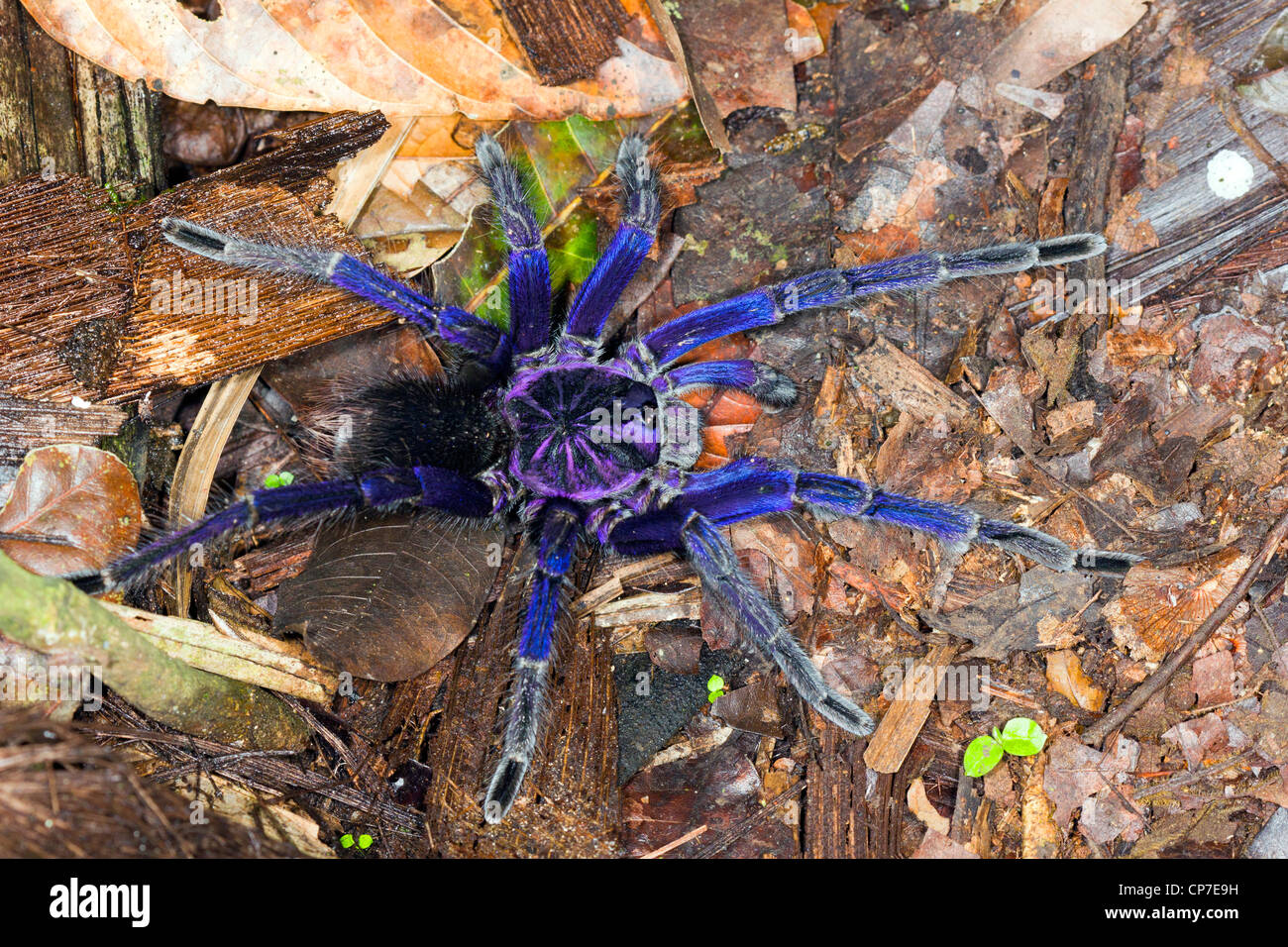
Purple Tarantulas
Purple-backed jumping spider. The Purple-backed jumping spider is a species of jumping spider native to Australia. It is a small spider, with a body length of about 6 millimeters. Usually, the male is about twice the size of the female. The male has a brightly colored abdomen with a blue or purple sheen.

Purple Tarantula Facts Identification & Habitat
The purple bloom birdeater is one of the most beautiful species of tarantulas, and is a popular pet. but how common are they in the wild? I've been looking.

Pin by SUE DOWNS on spiders Pet tarantula, Spider, Pet spider
The purple tree tarantula is an arboreal spider that builds a nest in the tree hollows. 2. Martinique Pinktoe Caribena versicolor Scientific name: Caribena versicolor. Common name: Martinique red tree spider, Martinique pinktoe. The Antilles pinktoe tarantula is also known as the Martinique pinktoe or Martinique red tree spider.